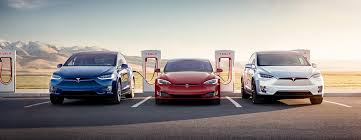Over the past half decade, the energy sector has been going through a major seismic shift, pivoting away from fossil fuels toward cleaner, renewable alternatives. The sector has, amazingly, maintained its momentum amid the Covid-19 pandemic and subsequent lockdowns that brutally disrupted the entire global energy sector.
A recent report by clean energy watchdog Bloomberg New Energy Finance (BNEF) proves that the renewable energy sector has remained largely immune to the ravages of Covid-19, with global energy transition investments in 2020 clocking in at a record $501.3 billion, good for 9% Y/Y growth.
Yet, digging deeper into that report reveals that the clean energy boom is heavily lopsided in favor of a single segment: Electric vehicles or EVs.
EV outperformance
BNEF analysis shows that both public and private investments in renewable energy capacity came to $303.5 billion, up 2% on the year, thanks mainly to the biggest-ever build-out of solar projects as well as a $50 billion surge for offshore wind.
The EV sector, however, performed much better, with investments in the burgeoning sector, including charging infrastructure build-out clocking in at $139 billion, good for a 28% Y/Y increase. Meanwhile, the passenger EV market reached an estimated $118 billion representing a four-fold growth compared to 2016 levels.
But here’s the gist in the two numbers: Renewable energy investments have been mostly flat, managing a meager 0.15% CAGR growth over the past five years compared to 20.74% CAGR for electrified transport over the timeframe.
In fact, at this rate, investment in the global electrified transport sector is set to overtake the entire renewable energy sector by 2025.
But that seemingly bold claim could actually be quite conservative.
BloombergNEF says the year-end electric vehicle sales are likely to come in higher than previous projections. Further, BNEF expects 4.4 million electric vehicles sold in 2021, good for $200 billion total investment in electrified transport. If that holds true, the EV sector will be attracting more investments than the entire renewable energy sector as soon as 2023.
A tipping point
The biggest catalyst for the global EV sector is this: The sector is close to a “tipping point” of mass adoption thanks to falling costs.
Indeed, EV sales increased at a torrid 43% clip globally last year, with price parity with ICE on an unsubsidized basis expected to be achieved as early as 2023.
Batteries and the EV powertrain make up 70% of the cost of an EV. Luckily, the cost of lithium-ion batteries has dropped dramatically since 2010 and is expected to continue to do so. To illustrate the point, consider that back in 2010, the price of an EV battery pack was $1,160/kWh (USD) compared to the 2018 average price of $176/kWh.
BloombergNEF has forecast the cost will be nearly cut in half to $94/kWh by 2024, and then to just $62/kWh by 2030.
The International Council of Clean Transport sees Tesla Inc. getting there first, reaching $100/kWh by 2022 thanks to its NCA-based battery pack technology as well as due to better economies of scale thanks to its higher production volumes compared to its peers.
In fact, Bloomberg had predicted that EVs would achieve upfront price parity with ICE vehicles as early as 2022. The current health crisis will probably knock that back a few years, but it’s almost certain to happen in the near future.
Further, advances in battery tech are not only lowering costs but could also help boost range and charging times–both key considerations by buyers.
Whereas many buyers cite sustainability and environmental concerns as some of the most compelling reasons for switching to an electric vehicle, the potential fuel savings remain a major factor while the high initial costs of EVs act as a leading deterrent.
This sounds like bad news in this era of low oil prices since paying significantly less at the pump is likely to act as a disincentive for people looking to make the switch.
However, the reality is that oil prices would have to fall really low before they can begin to challenge electricity as a low power source.
According to AAA fuel price data, the average motorist is paying just $2.42/gallon of regular petrol, more than 90% higher than what the average EV driver is paying for charging costs across the country.
It would take oil prices to fall to unprecedented lows and stay there for ICE running costs to become as cheap as operating an EV.
That, however, is a pretty tall order given that oil prices have more than doubled from recent lows, with most analysts predicting a slow but sure rebound.
But ultimately, the fact that the United States has rejoined the Paris Climate Accord means that the transport sector–the biggest contributor of GHG emissions–is going to become a major focal point of the clean energy drive. This fact alone implies that the EV sector is likely to see major investments in the U.S. and globally over the coming years.

 Iran Energy News Oil, Gas, Petrochemical and Energy Field Specialized Channel
Iran Energy News Oil, Gas, Petrochemical and Energy Field Specialized Channel



